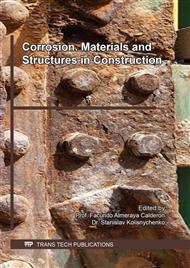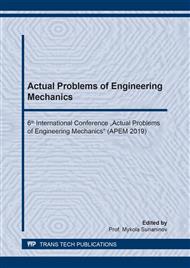p.76
p.82
p.89
p.96
p.107
p.115
p.122
p.131
p.143
Investigation of Biostability of Concrete Constructions for Special Purpose
Abstract:
Concrete of used sewers is exposed to various aggressive environments. While making concrete pipes for special purposes, special attention is paid to reducing the permeability of the surface layer of concrete. It is possible to increase the operational characteristics of concrete by introducing into the cement system the active components chemically interacting with the cement minerals. When the complex modifier interacts with cement particles, the structure and properties of the modifier undergo qualitative changes. The article presents the results of researching the porosity of the modified cement matrix. It has been established that in the neoplasms of the modified cement matrix of concrete, the quantity of free calcium hydroxide does not exceed 5% that is a necessary condition for getting a corrosion-resistant material. As a result of the analysis of modern technologies, it has been established that physical modification is possible by removing excess mixing water that increases the use of the potential qualities of cement in order to increase the density, impermeability and strength of concrete in the process of compaction of the mixture.
Info:
Periodical:
Pages:
107-114
Citation:
Online since:
August 2019
Authors:
Price:
Сopyright:
© 2019 Trans Tech Publications Ltd. All Rights Reserved
Share:
Citation:



